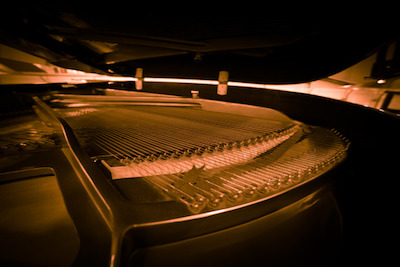New to piano? Just like any industry, there are a lot of terms you have to learn. When you head into a piano dealer for the very first time, you’re likely to hear words like soundboard and action. What do they mean? And how important are they when making your final selection?
The Back
The back of a vertical piano has five or six vertical posts that serve as stays against the frame. These posts provide added strength to resist the pull of the strings inside. These posts should be sturdy enough to provide adequate support in proportion to the piano.
Soundboard
Across the back of the piano is a soundboard, which translates the vibrations of the strings into the tone of the piano. The soundboard is one of the most vital parts of the piano. The soundboard is what conducts the sound. So it’s important it’s sturdy and straight and made of top quality materials.
Plate
The plate is a piece of cast iron bolted to the back of the frame. It holds one end of the string and provides the support for almost 20 tons of pressure from the pull of the strings.
Bridges
The treble and bass bridges are made of long, hard maple wood and are attached to the soundboard, transferring the vibrations of the string connecting the two.
Action
The working section of the piano is the action. The action contains around 7,500 parts, all taking a role in the act of creating music. Grand pianos have horizontal action, while upright pianos have vertical action. This is the process of sending the hammers against the strings when the keys are struck.
Hammers
Piano hammers are formed by felt being molded into a wooden hammer under tremendous pressure. Hammers are often referred to by weight, such as a 12 pound hammer. This refers to the weight of the sheets of felt that were used in the process.
Keys
Each key is balanced by a center pin and bushed with fine wool to silence it and provide proper clearance in the key bed. The keys are not made of ivory, instead, are molded plastic and designed not to crack or yellow. The black keys are made from similar material.
Pedals
Most pianos have three pedals. The sustaining or damper pedal on the right dampers the strings so that the tone is sustained after the keys are released. The una corda pedal mutes the tone by shortening the distance the hammers travel by shifting the action. The sostenuto is optional, not on every piano. It is used to sustain select tones at the pianist’s discretion.

